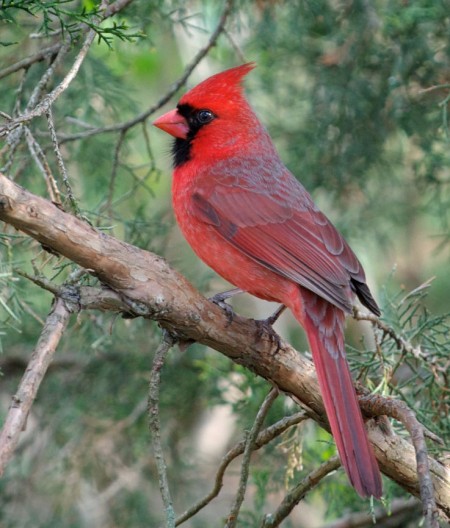
Sex differences aren’t created merely through socialization. Both male and female Northern cardinals sing. However, across cardinal chicks raised individually in an acoustically controlled environment, young males take about three times as long to learn songs as do young females. Males, however, are later more versatile singers as adults.[1] Among free-living cardinals, song control brain regions in adult males are 1.5-2.0 times larger than those in adult females.[2] Bird song is produced through complex interactions across sexes. Those communication systems encompass characteristic differences between females and males.
Sex differences depend on social circumstances. Among cowbirds, juvenile males housed without adult male cowbirds develop different singing characteristics than juveniles housed with adult males.[3] Unlike humans, cowbirds themselves lack oppressive and discriminatory institutions that separate juvenile males from adult males. Cowbirds are unlikely to be capable of developing such institutions. Thus cowbird song is strongly fixed in cowbird social nature.
Whether communicative behavior is determined genetically or socially has little significance if social structure responds to environmental changes at a timescale similar to that of changes in genetically coded behavior. Chickadees naturally experience significantly different social structures. Chickadees living alone or in a pair make less complex calls than chickadees living in larger groups. That change in call type occurs in weeks following a change in the chickadees’ social group.[4] However, most birds’ pattern of social living changes little through a bird’s lifetime. The social structure of most bird species is an emergent property of their particular nature. To a significant extent, social structure changes in a reproductively fruitful way only with changes in the nature of the bird.
* * * * *
Read more:
- system, not signals, for biological analysis of communication
- sex differences in communication among razorbills
- recognizing sex differences in human communication
Notes:
[1] Yamaguchi (2001). Social factors also affect cardinals’ singing. Vondrasek (2006).
[2] Jawor & MacDougall-Shackleton (2008).
[3] White, King & West (2002).
[4] Freeberg (2006).
[image] Male Northern Cardinal in Columbus, Ohio, USA, 2011. Thanks to Stephen Wolfe and Wikimedia Commons.
References:
Freeberg, Todd M. 2006. “Social Complexity Can Drive Vocal Complexity: Group Size Influences Vocal Information in Carolina Chickadees.” Psychological Science. 17 (7): 557-561.
Jawor, Jodie M., and Scott A. MacDougall-Shackleton. 2008. “Seasonal and sex-related variation in song control nuclei in a species with near-monomorphic song, the northern cardinal.” Neuroscience Letters. 443 (3): 169-173.
Vondrasek, Joanna R. 2006. “Social factors affect the singing rates of female northern cardinals Cardinalis cardinalis.” Journal of Avian Biology. 37 (1): 52-57.
White, David J., Andrew P. King, and Meredith J. West. 2002. “Facultative development of courtship and communication in juvenile male cowbirds (Molothrus ater).” Behavioral Ecology. 13 (4): 487
Yamaguchi Ayako. 2001. “Sex differences in vocal learning in birds.” Nature. 411 (6835): 257-8.